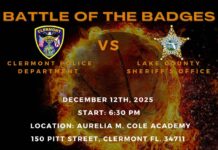Submitted by Nichole Smith, Montverde Academy
Mrs. Joslyn Roberts-Judy teaches 7th grade life science and robotics in the Middle School at Montverde Academy. This summer, she traveled to Saco, Maine, for a professional development institute at The Teacher Institute for Watershed Science and Conservation, sponsored by Poland Spring, at The Ecology School. The Ecology School’s mission is to transform how people think about science, their food, and their environment, as well as themselves, to bring hands-on learning for all ages.
Teachers who attended the institute were challenged to explore the water’s connection to all our human systems, its impact, and the environment. The Ecology School trained the teachers with a variety of field-based ecology lesson plans, which can be applied to the classroom. Attendees were also given the opportunity to network and collaborate with colleagues from schools all over the country to try to reimagine teaching to include outdoor learning and community partners. A highlight of the institute was going to a tide pool ecosystem. The institute explored the ecology methodology and discussed various teaching methods and how teachers could apply them in an outdoor teaching environment. Ordinarily, teachers teach inside a classroom, so applying these methods to the outdoors requires some adjustment. At the institute, teachers were given time to develop curriculum and design instruction, and they presented a project that they would be able to apply back at their home schools. They will be sending that project to The Ecology School to improve community development and outreach from the program.
Here at MVA, our sixth-grade curriculum is earth space science, seventh grade is life science, and eighth grade is physical science. Students progress from knowing the stars to what’s here on Earth and then to the mathematics and chemistry that build that. If a class is outside at the lake, the question becomes, how can all three subjects be brought in if the subject is simply water? The answer to that, Mrs. Roberts-Judy explained, might be this: Students can do a lab project where they collect data, and they can take measurements with conductivity and track the water cycle, which would be earth space science. Then they can look at microorganisms and the health of the pond as it relates to life science. Not only would students be studying the subject of their own grade level, but they would also be studying how their subject connects with the curricula of other grade levels.
One of the most valuable things that Mrs. Roberts-Judy learned at the institute was how to use the green space that we do have here on campus. Even though we have a lot of greenery, we can work on using it to its full potential. Another valuable thing she learned was finding additional ways to connect vertically with our two other science teachers, so they’re already purchasing outdoor water quality kits to be used across the three grade levels.
She also wants to focus on a pollinator garden that mimics a food forest to show how co-growing certain species can bring in not only the pollinators but also make food for us to eat, and she wants to focus on the importance of knowing how to grow your own food and then also look at how that helps manage water.
The project that she presented at the institute was to have students go out and create a mathematical grid of our acreage on campus. We have multiple lakes surrounding our campus, and each lake is a separate watershed. They’re not all necessarily going to be the same, and when it rains, the water doesn’t all go into the same place. The water quality of each lake is dependent on that waterflow. She plans to have students go out, get an aerial map of it, grid it out, mimic a system like Geographic Information System (GIS), which is an engineering program, and take elevation readings. Then they will mimic making a topographical map like a cartographer to show how elevation manages. They will then predict where water would flow when it rains and then test their hypothesis by pouring water and observing the direction of the water flow to determine what watershed it would enter. With the technology of GIS, one can see the grid and layers automatically; but she wants to teach students the process of science by going out, creating their own grid, measuring, and double-checking their work.
Mrs. Roberts-Judy felt that the institute was a fantastic experience, and she hopes to bring other teachers back with her next year, not only from other grade levels in the Middle School but also from the Lower and Upper Schools. Mrs. Roberts-Judy’s ideas have the potential to make quite an impact across the entire school.






